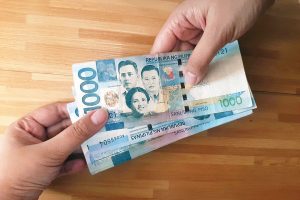THE GOVERNMENT needs to ensure that the peso does not breach the P58-to-the-dollar level next year to ensure that the goal of becoming an upper-middle income country is not delayed, according to the National Economic and Development Authority (NEDA).
At a Senate finance committee hearing with the Development Budget Coordination Committee on next year’s P6.352-trillion national budget, NEDA Secretary Arsenio M. Balisacan said attaining upper-middle income status could slide to 2026 if the peso weakens past this threshold.
“For as long as we do not exceed P58 per dollar next year, among the other indicators, we expect to hit or to be reclassified as an upper-middle income country,” he told senators.
The World Bank defines an upper middle-income country as one having a gross national income (GNI) per capita of between $4,516 and $14,005.
The Philippines is classified as a lower middle-income country with a GNI per capita of $3,950. It has been at this income level since 1987, according to the World Bank.
Mr. Balisacan told reporters on the sidelines of the hearing that interest rates and inflation could affect the Philippines’ nominal income.
“It’s just one of the factors, because there’s interest rate differential and the inflation differential between us and our trading partners.”
Inflation accelerated to a nine-month high of 4.4% in July, which ended seventh straight months of inflation being confined to the central bank’s 2-4% target band.
“The full impact of foreign exchange rates depends on various other economic factors and policies, chief of which are offshore developments, which are beyond the control of both the central bank and the National Government,” Security Bank Corp. Chief Economist Robert Dan J. Roces, said via Viber.
Leonardo A. Lanzona, who teaches economics at the Ateneo de Manila, said the government should focus on expanding exports if it wants to improve its income status.
“We need to develop our domestic resources if we are to expand the economy,” he said via Messenger chat.
“Overvaluing the currency just to bring in the imports is not going to be efficient.”
The peso closed at P56.96 on Tuesday from P57.316 previously, its strongest finish since hitting P56.808 on April 15.
In May, the peso breached the P58 level for the first time since November 2022. The peso has been trading in the P57-P58 range since then.
Diwa C. Guinigundo, country analyst for the Philippines at GlobalSource Partners and a former central bank deputy governor, said:
“Per capita income is driven by good growth and employment dynamics, and stable inflation.” — John Victor D. Ordoñez
